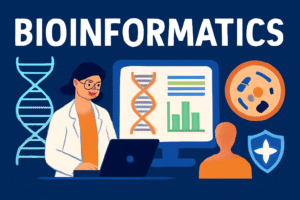Dive into the dynamic realm of sampling and its widespread applications across various industries and fields. From the bustling markets of commerce to the meticulous labs of healthcare, sampling stands as a beacon, guiding professionals and researchers to meaningful insights. Let’s embark on a journey to explore how sampling shapes our understanding of the world around us. 🌟
3.1 Sampling in Market Research: Decoding Consumer Behavior 🛍️
- Essence of Sampling: Market research thrives on understanding diverse consumer preferences, needs, and behaviors. Sampling offers a practical way to gauge these trends without surveying every consumer.
- Real-World Examples:
- Product Testing: Before launching a new product, companies often use sampling to gather feedback from a selected group of consumers. This approach helps refine products and target the right audience.
- Brand Perception Studies: Sampling helps companies understand how different demographics perceive their brand, guiding targeted marketing strategies.
3.2 Sampling in Healthcare: Innovations and Insights 🏥
- Clinical Trials: Sampling plays a vital role in clinical trials, where researchers study the effects of new treatments on a sample of patients. This method ensures the safety and efficacy of new drugs before they are made available to the broader population.
- Epidemiological Studies: Understanding the spread of diseases and health trends is crucial in public health. Sampling allows for the study of disease patterns and risk factors in a manageable subset of the population.
3.3 Sampling in Environmental Studies: Nature’s Numbers 🌳
- Wildlife Surveys: Sampling methods are used to estimate the population sizes and distribution of various wildlife species, crucial for conservation efforts.
- Pollution Assessment: Environmental scientists use sampling to monitor air and water quality in different locations, providing data for ecological assessments and policy-making.
3.4 Sampling in Social Sciences: Understanding Societal Trends 🌐
- Public Opinion Polls: Sampling is the backbone of gauging public opinion on social, political, and economic issues. It provides insights into the collective mindset and societal trends.
- Sociological Research: Studies on cultural, social, and behavioral patterns rely on sampling to explore and understand the complexities of human societies.
3.5 Sampling in Education: Learning Landscapes 📚
- Educational Assessments: Sampling methods are used to evaluate educational programs and policies by assessing a representative group of students or educators.
- Curriculum Development: Sampling student and teacher feedback helps in developing and refining educational content and teaching methods.
3.6 Sampling in Finance: The Economic Pulse 💹
- Market Analysis: In finance, sampling techniques are used to analyze market trends, consumer credit scores, and investment risks.
- Economic Forecasting: Economists use sampling to predict economic trends, aiding in policy formulation and financial planning.
Conclusion: Sampling – The Unseen Hero in Data Storytelling 🚀
Sampling is an unsung hero in the story of data and its applications. It brings a world of information within our reach, offering a lens to view and analyze trends, behaviors, and patterns across various domains. From enhancing consumer products to shaping healthcare advancements, sampling remains a cornerstone in the pursuit of knowledge and progress.

Why Learning Bioinformatics is Essential for the Future of Science and Healthcare
October 21, 2025
No Comments
Read More »
NLP Mastery Guide: From Zero to Hero with HuggingFace | Codanics
May 25, 2025
No Comments
Read More »
Scikit-Learn Mastery Guide: Complete Machine Learning in Python
May 24, 2025
No Comments
Read More »
Facebook
Twitter
LinkedIn
Hi, Welcome back!